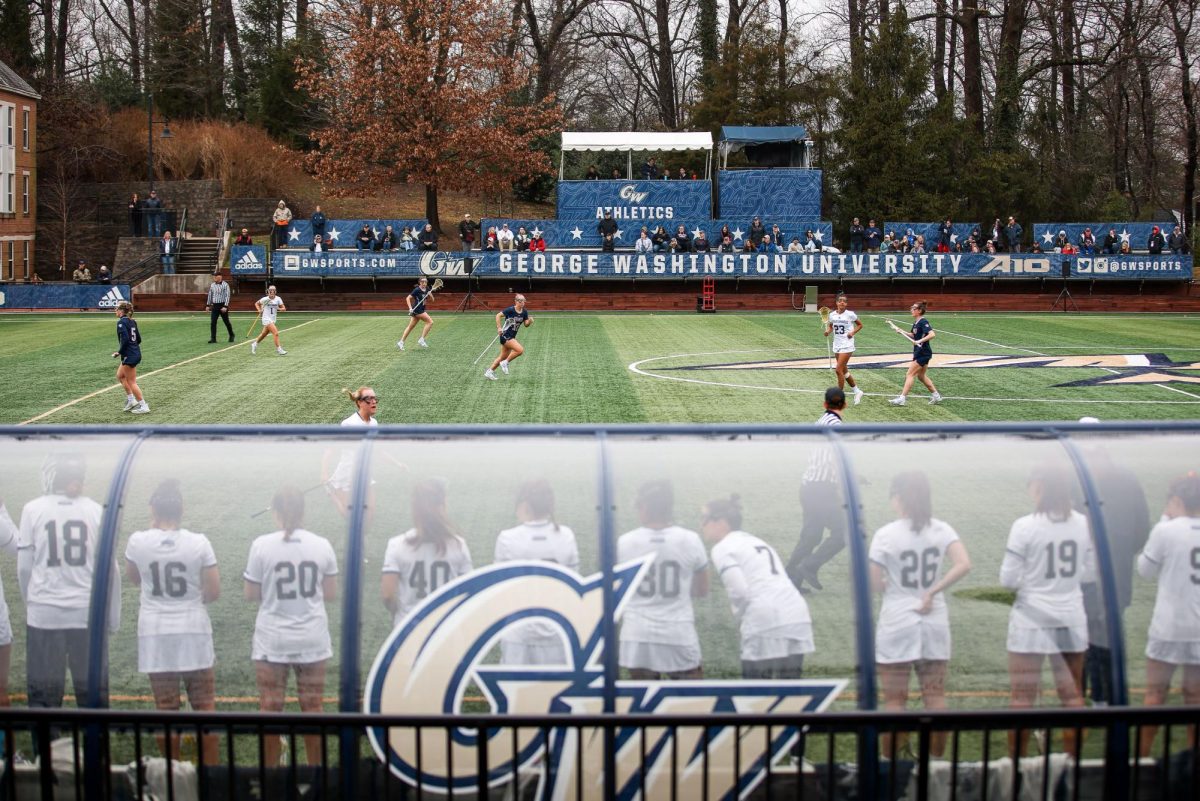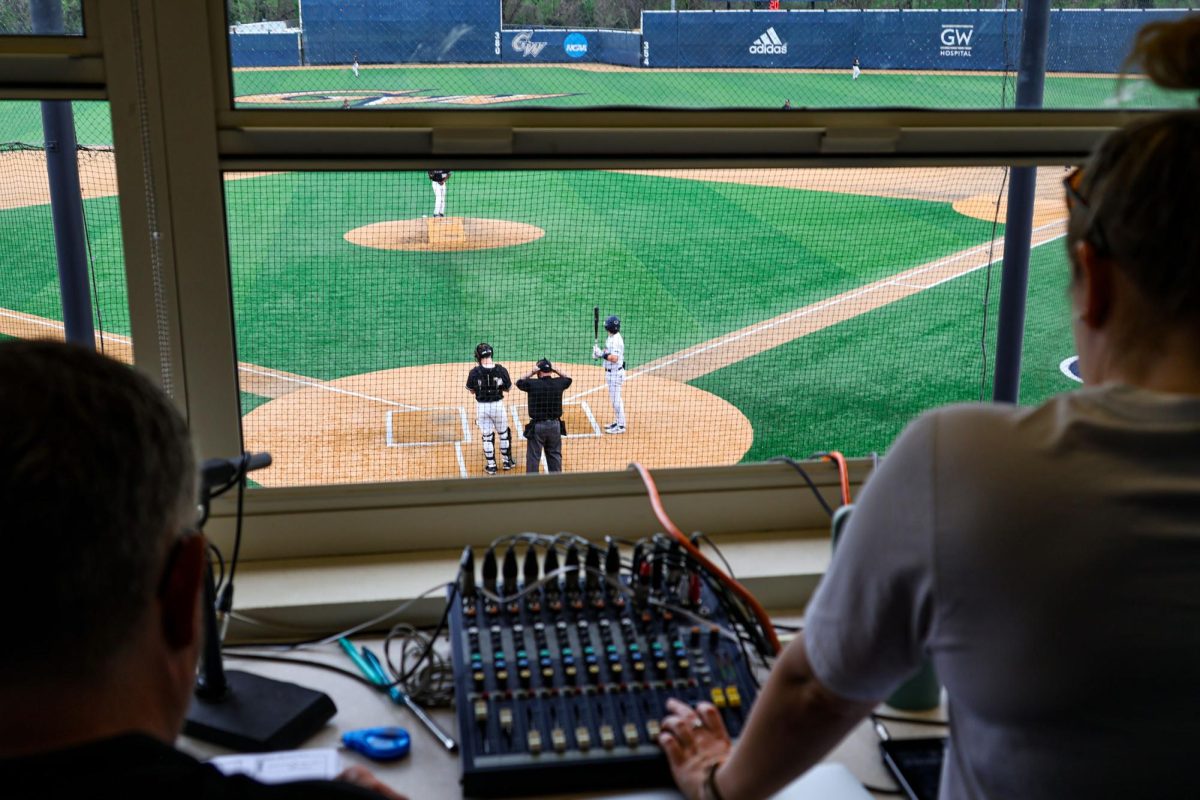In the world of college athletics, boosters and referees have one thing in common – the less media attention they receive, the happier everyone stays. And since there have been no scandals or investigations surrounding the men and women who give money to GW athletics, they tend to remain out of sight. But confusing that invisibility with absence would be a mistake.
“Without boosters, we wouldn’t be nearly as successful as we’ve been,” Director of Athletics Jack Kvancz said.
Since Kvancz arrived at GW 10 years ago, the number of boosters and season ticket holders at GW has increased substantially. This is partly due to the success former men’s basketball head coach Mike Jarvis brought to the program in the mid-’90s and partly a result of Kvancz’s efforts to place more emphasis on the school’s supporters.
Shortly after he arrived, Kvancz started the Athletic Director’s Club, a group that men’s basketball season ticket holders can join for a minimum of $500. By paying $1,000, they also get a parking space, and some pay more just to support the program. The club, which meets before every men’s home game to socialize and eat, started with three members and has grown to 130.
For $200, women’s basketball season ticket holders can join the Top 20 Club, which meets before roughly 75 percent of women’s home games.
Keith Greene, a 1979 graduate of GW and season ticket holder ever since, said these clubs provide two main benefits for boosters.
“One, it’s a constructive way for the fans to be able to give money, which many fans don’t know how to do,” he said. “Second, it creates a situation of camaraderie and collegiality among the season ticket holders, and that leads to an increased fan base.”
Despite the success of the AD’s club, GW still faces a constant challenge in maintaining its growing number of boosters.
“We’re from all over the world,” Kvancz said. “Our people have a tendency to go to school at GW but then go (home) and live in Michigan. (They say), ‘It’s nice that you offer me a $50 seat, but I’m in Michigan.'”
Because GW can’t rely on a large group of alumni as boosters like state schools can, Kvancz has employed a networking strategy that attempts to utilize GW’s few local alumni as salesmen.
“The theory is this,” Kvancz said. “If I get you as an alumnus, you work somewhere, (and) maybe you get two or three other people. Now I got four with one.”
Greene is a successful employer of this strategy; he was accompanied before Saturday’s men’s basketball game against Duquesne by two season ticket holders he brought to GW.
“I think, philosophically, that’s the way to do it,” Greene said. “I think Jack (Kvancz) and his staff have really reached out to season ticket holders to try to bring them in and bring them closer to the program.”
Everybody acknowledged, however, that an athletic director can only do so much. The head coaches are the school’s most important representatives, and there was generous praise for men’s coach Karl Hobbs and women’s coach Joe McKeown.
“The school is lucky to have two coaches who are very fan friendly and very open to interacting with the fans,” Greene said. “That was not necessarily the case under Jarvis. Jarvis was more distant. (Former men’s coach Tom) Penders was good with the fans, but Hobbs has really reached out and is really trying to make connections with the season ticket holders.”
Once season tickets are purchased and boosters donate money, it can be used in a variety of ways. If it is simply donated to the athletic department in general, school officials can choose to use it on uniforms, weight equipment, team travel or any way they see fit. If it is donated to a specific sport, it goes in what’s called an “R fund,” which stands for reserve fund. This money accumulates and can be used whenever that sport needs the money for a specific purpose.
Kvancz estimated that GW receives roughly $500,000 total from boosters each year, which he guessed would rank GW in the middle of the Atlantic 10, although schools do not typically share such information. Kvancz said he thinks GW ranks below state schools like Rhode Island and Massachussets and probably trails high profile schools like Xavier and Dayton. But he said GW is likely ahead of schools like La Salle, St. Bonaventure and Duquesne.
The largest single donation to GW totaled $1 million, which was to be used over a 10-year period. Kvancz would not name the donor but said the gift came in the form of stock, adding, “You can figure out who gave it. All you have to do is look inside the arena.”
Asked if that was Boston Celtics stock, Kvancz nodded, silently confirming that the donor was Hall of Fame alum and former Celtics coach Red Aurebach.
Donations that large are uncommon, however, as are donors that are famous. The more typical example of a GW booster would be University Archivist G. David Anderson and his wife Blanche, who have been season ticket holders for 13 years, following both the men’s and women’s basketball teams as well as all other GW sports.
The Andersons met one of their closest friends at a basketball game many years ago and feel similarly close to players they have followed over the years. Blanche Anderson called former women’s basketball All-American Tajama Abraham one of their “dearest.”
For the Anderson’s, these relationships are one of the primary benefits derived from donating money to athletics and holding season tickets.
“The University has a way in which you actually get to know the players by watching them on the court and reading about them in the media guides and meeting them on occasion at games,” Blanche Anderson said. “And that’s a very nice feature for us. It puts a little less distance than you would have in something you watch on television.”





